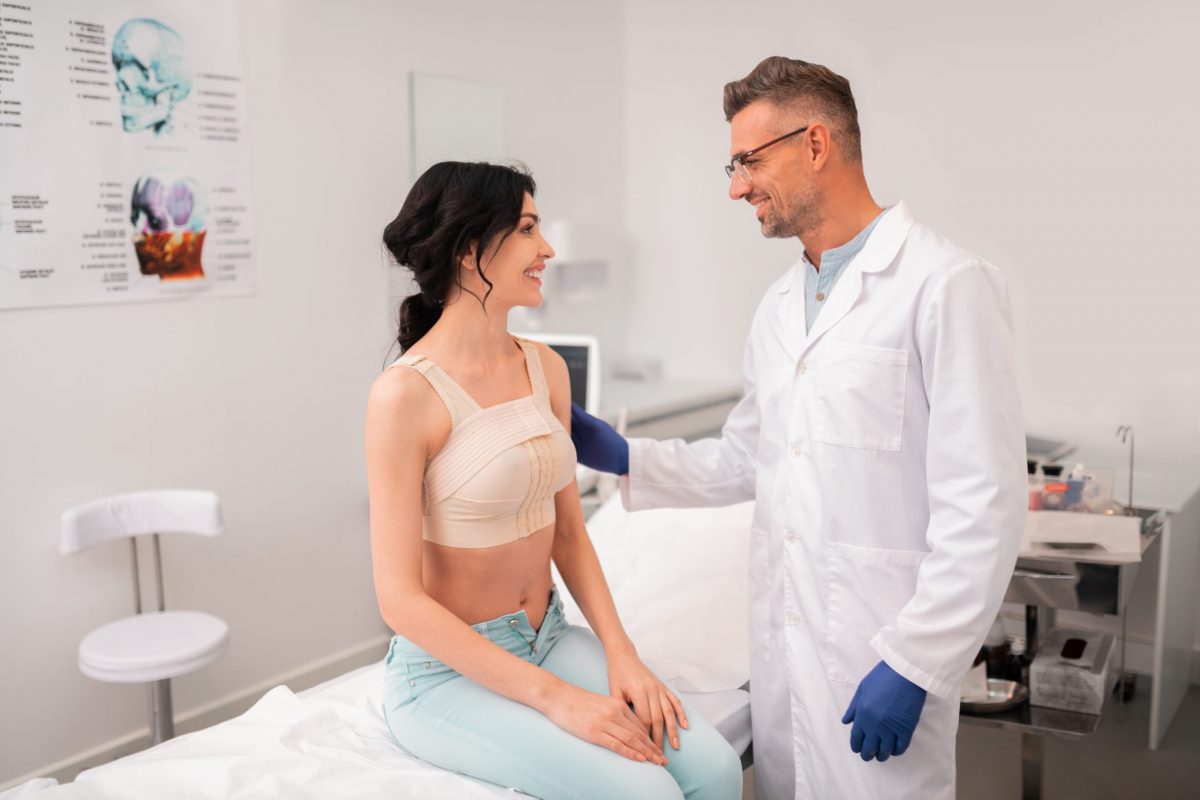A breast reduction can be life-altering. Patients choose breast reduction to reduce physical pain, embarrassment, and self-consciousness or because their oversized breasts don’t allow them all the physical activities they want to do. All of these issues can be changed in a positive way with breast reduction surgery. But there’s one unfortunate side-effect: like many types of surgery, breast reduction scars are a probability.
Most doctors advise patients to wait 12 to 15 months to see what their scars will look like permanently. During that time, scars will fade somewhat.
But what happens when that time period is over and you still have scars? Is there anything you can do? Today we talk about the methods patients use to treat scars during and after their breast reduction recovery.
What NOT to Do During the Healing Process
First, it’s important to know what habits could make scarring worse. That way you can avoid these activities.
Do NOT:
- Smoke
- Tan (either naturally or in a tanning salon)
- Excessively scrub the area when you cleanse it
- Scratch at your scars (if your scars are itchy, tell your doctor)
All of the above habits could slow the healing of your scars and may make their appearance worse. It’s especially important to avoid these activities while you’re healing, but it’s best to make them permanent.
What to Do During the Healing Process
There are a few things you can do to encourage better healing of your scars.
Do:
- Keep the area moisturized with products approved by your doctor
- Follow ALL your plastic surgeon’s post-operative instructions
- Drink plenty of water
- Gently wash the site each day per your doctor’s directions
- Wear sunscreen on your breasts if they will be exposed to the sun
How to Reduce the Appearance of Breast Reduction Scars
There are a number of ways that patients use to reduce the appearance of their scars. It’s important to ask your plastic surgeon before using any of the tips below.
With that said, some common methods of reducing breast reduction scarring include:
Embrace® Advanced Scar Therapy
Embrace® Advanced Scar Therapy pulls the skin together during healing. According to a 2015 study, patients who used Embrace® during their recovery had less scarring after a year.
Ask your plastic surgeon whether Embrace® therapy is appropriate for you and your recovery.
Surgical Tape
Surgical tape is the traditional way to keep skin pulled together after surgery. Not all surgeons or all methods use surgical tape, so ask your doctor whether it can help you.
If you and your surgeon choose surgical tape, you will probably use it for a couple of weeks post-surgery. Be careful removing the tape so you don’t excessively pull at the area.
Silicone Sheets
Silicone sheets are a popular method of treating scars. They work by keeping the area hydrated and protected, while at the same time providing breathability to the area.
Silicone sheets are usually worn once the incision has closed and healed. You can wear them over the area starting three to four weeks after your surgery and can then wear them regularly for several months.
The Correct Bra
Wearing the right bra after your breast reduction is essential. The area needs to be supported well while it’s healing. If not, scarring could be worse due to tugging, irritation, or gravity.
You will be given the correct post-surgical garments to wear 24/7 for the first several weeks following recovery. Your plastic surgeon will let you know when you’re able to go back to your regular bra.
Scar Massage
Massage is a popular method of reducing the appearance of scars. You should wait about two weeks before you begin this method, or whatever time frame your doctor advises.
Scar massage works by bringing blood flow to the area. It also helps loosen the tethering of the scars to the surrounding areas.
Ask your doctor how to perform a massage on your breast reduction scars. You don’t want to be too rough on the area.
Steroid Injections
This is a more serious method of treating scars, and it’s less commonly used. However, if your scars are excessive, you may consider steroid injections.
Steroid injections work by reducing inflammation. This can result in less itching, more comfort, and softening of the scars, which can mean they’re ultimately less visible.
Fractionated Lasers
Most patients don’t consider a method like fractionated lasers until several months after their breast reduction surgery. This procedure is for longer-term scarring that is excessive and bothersome.
The method is performed via microscopic lasers that are concentrated on the area of scarring. Usually, a patient will need multiple sessions over a period of months.
Remember to Love Your Body
Remember: you got your breast reduction to improve your quality of life and to be happier. While you may be left with some degree of scarring, it can usually be covered with a bra or bikini top.
In the meantime, you’ll be enjoying more freedom and self-confidence. So love the skin you’re in, and enjoy all the benefits your breast reduction surgery brings.








